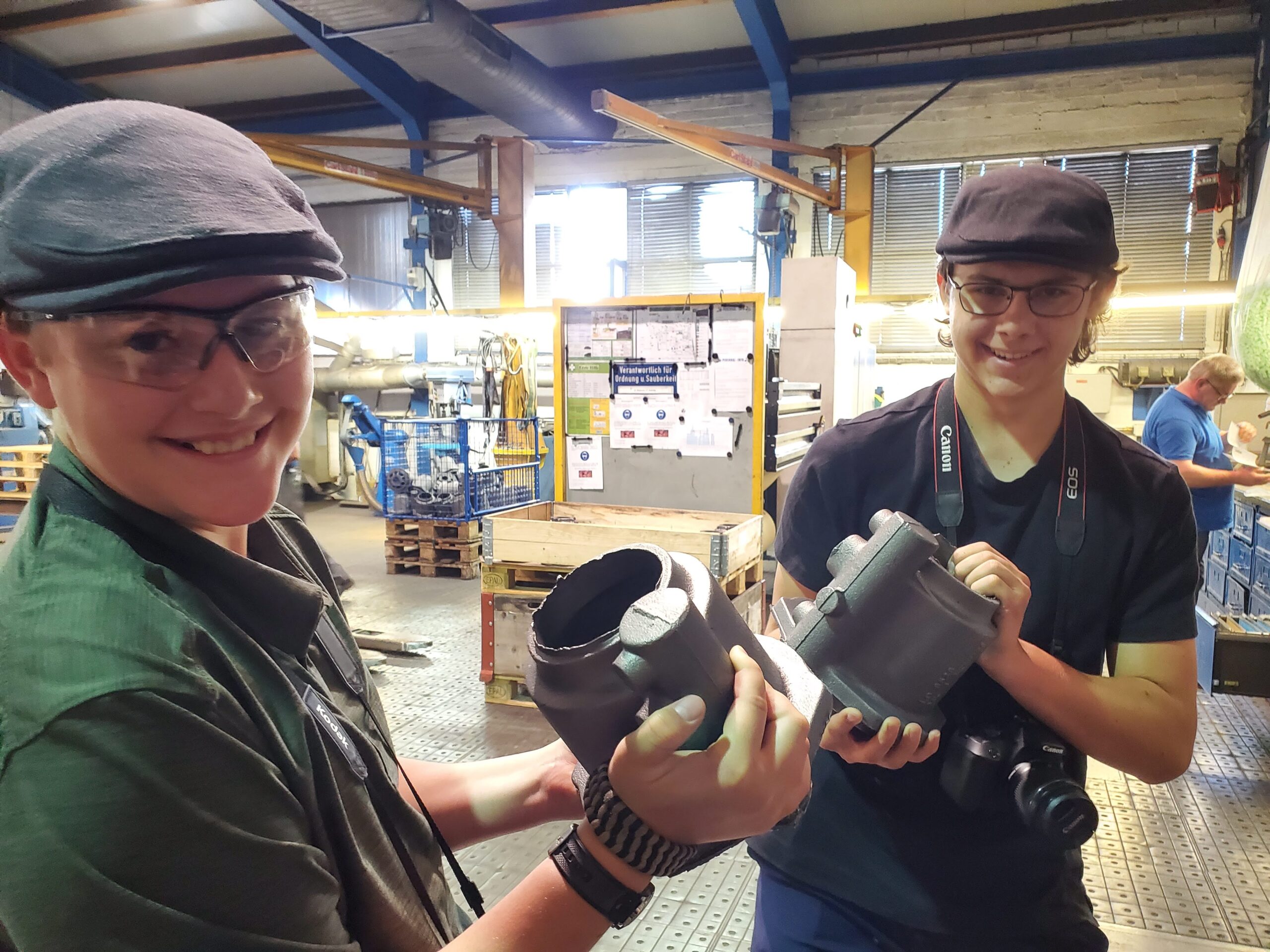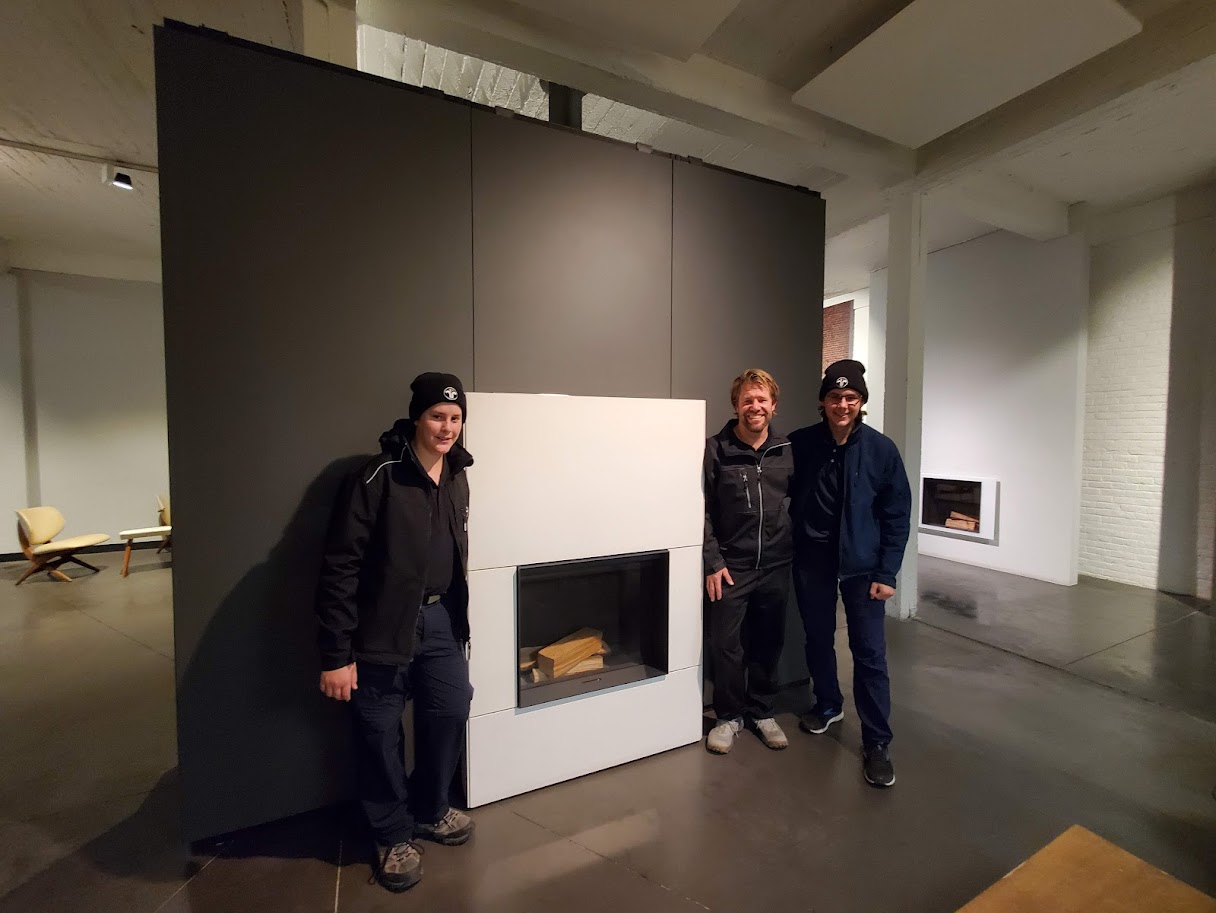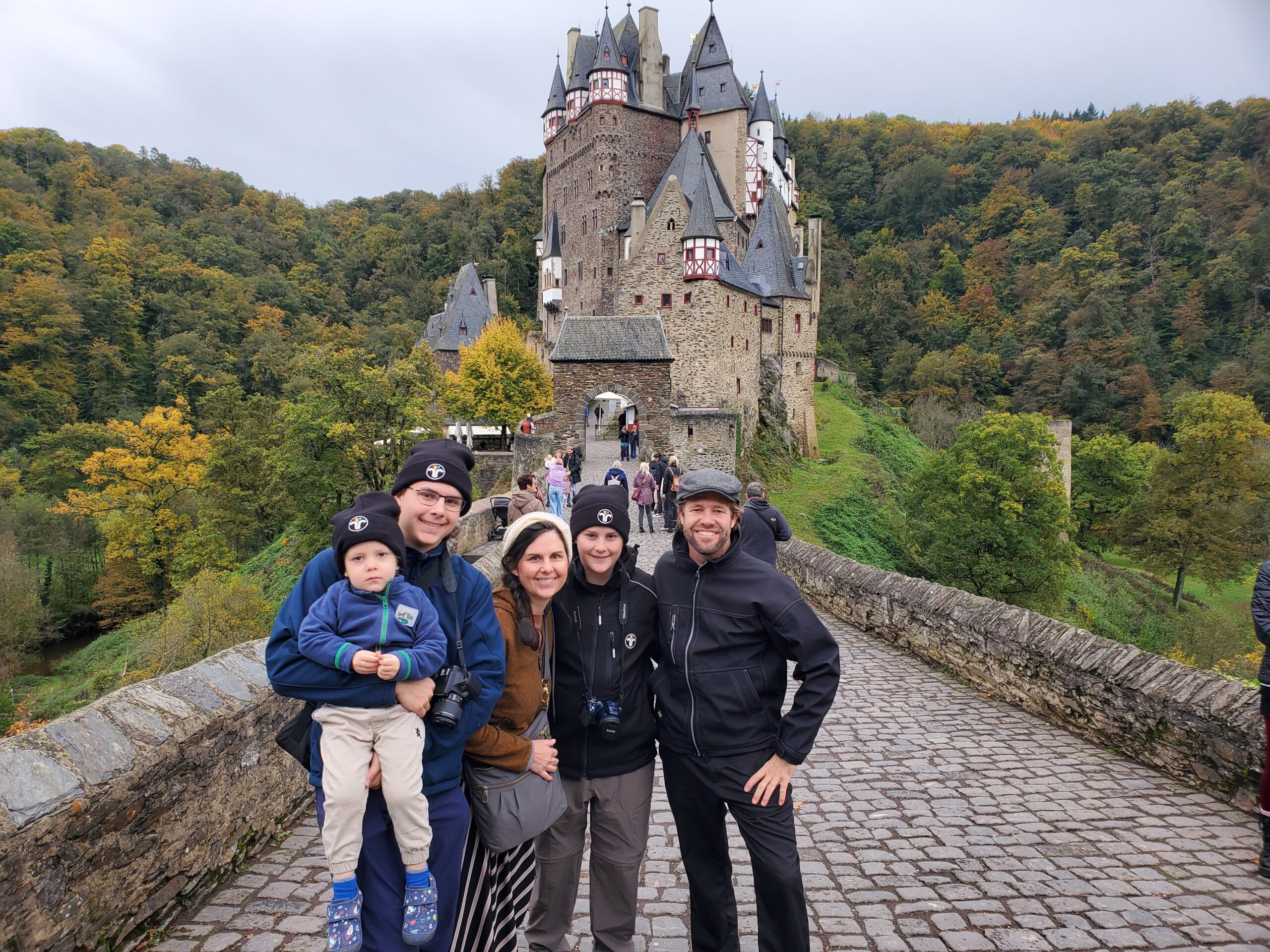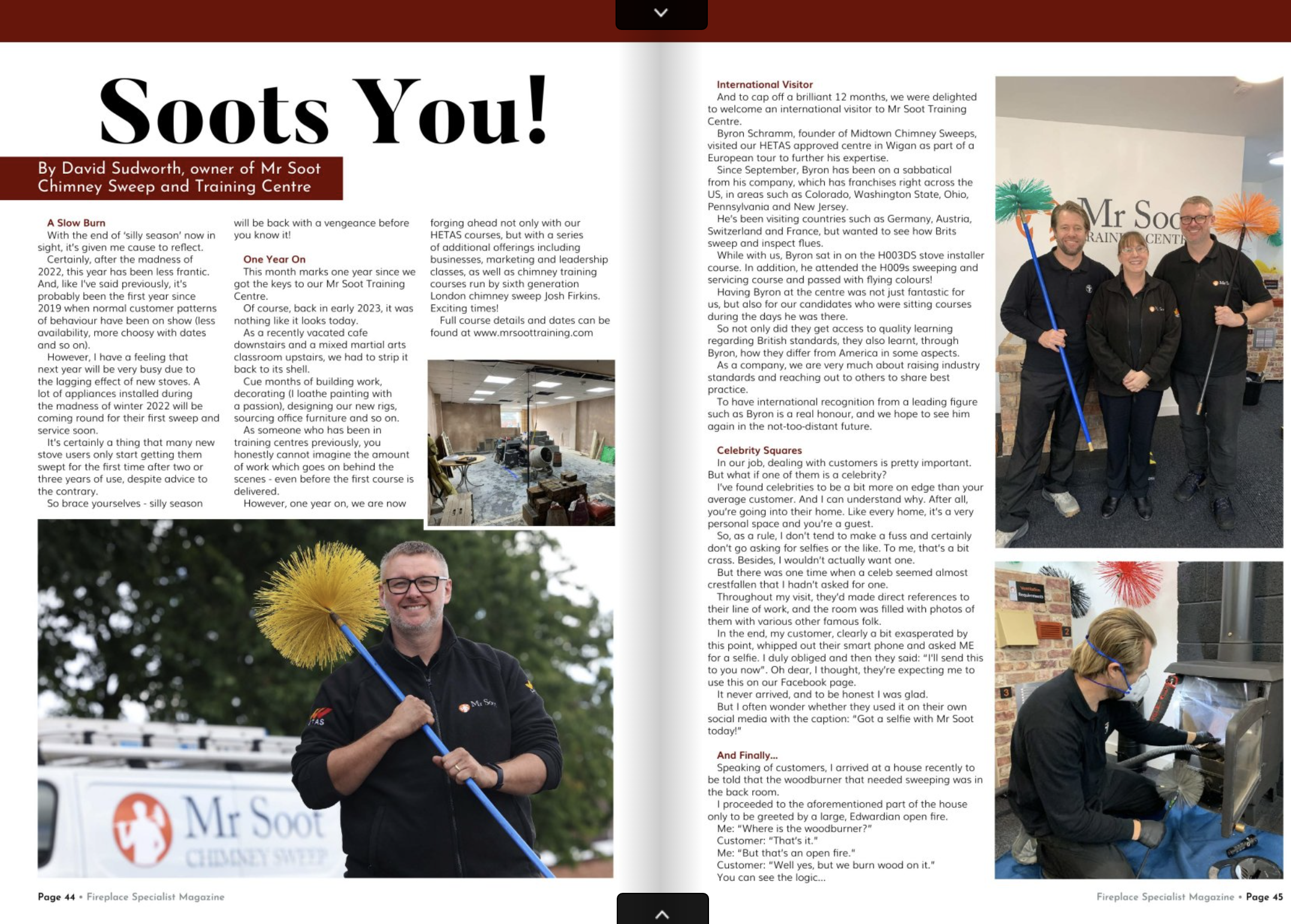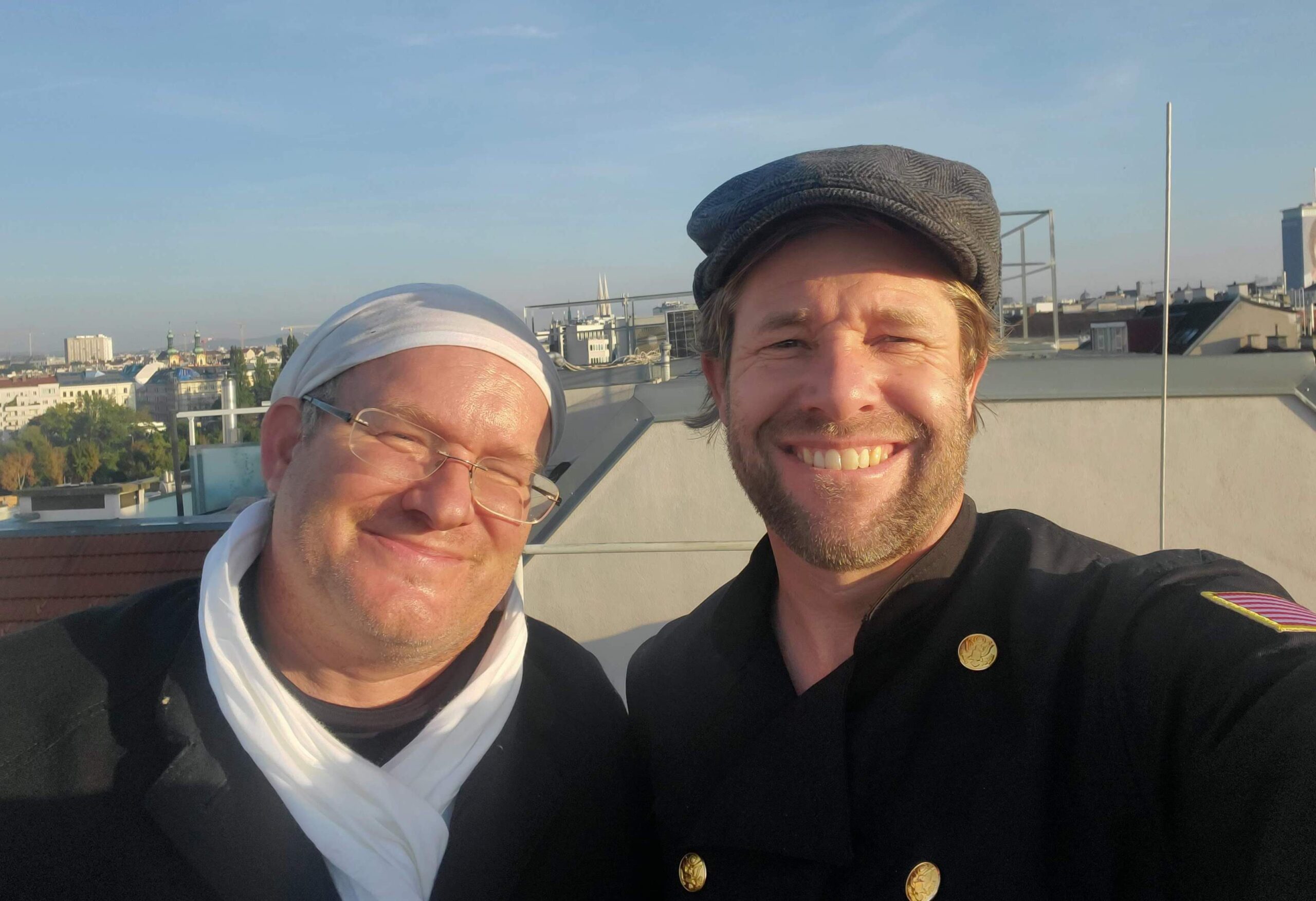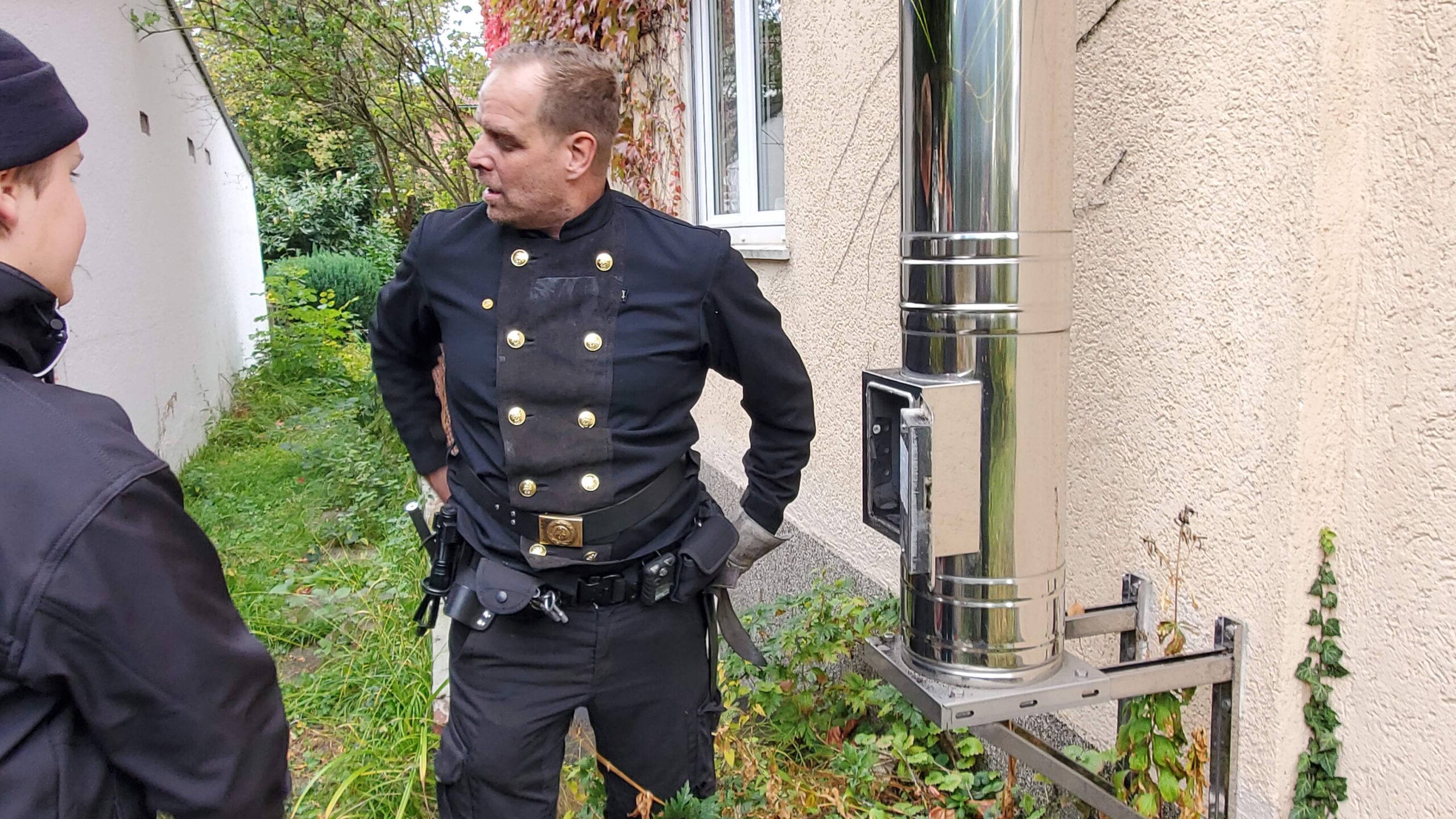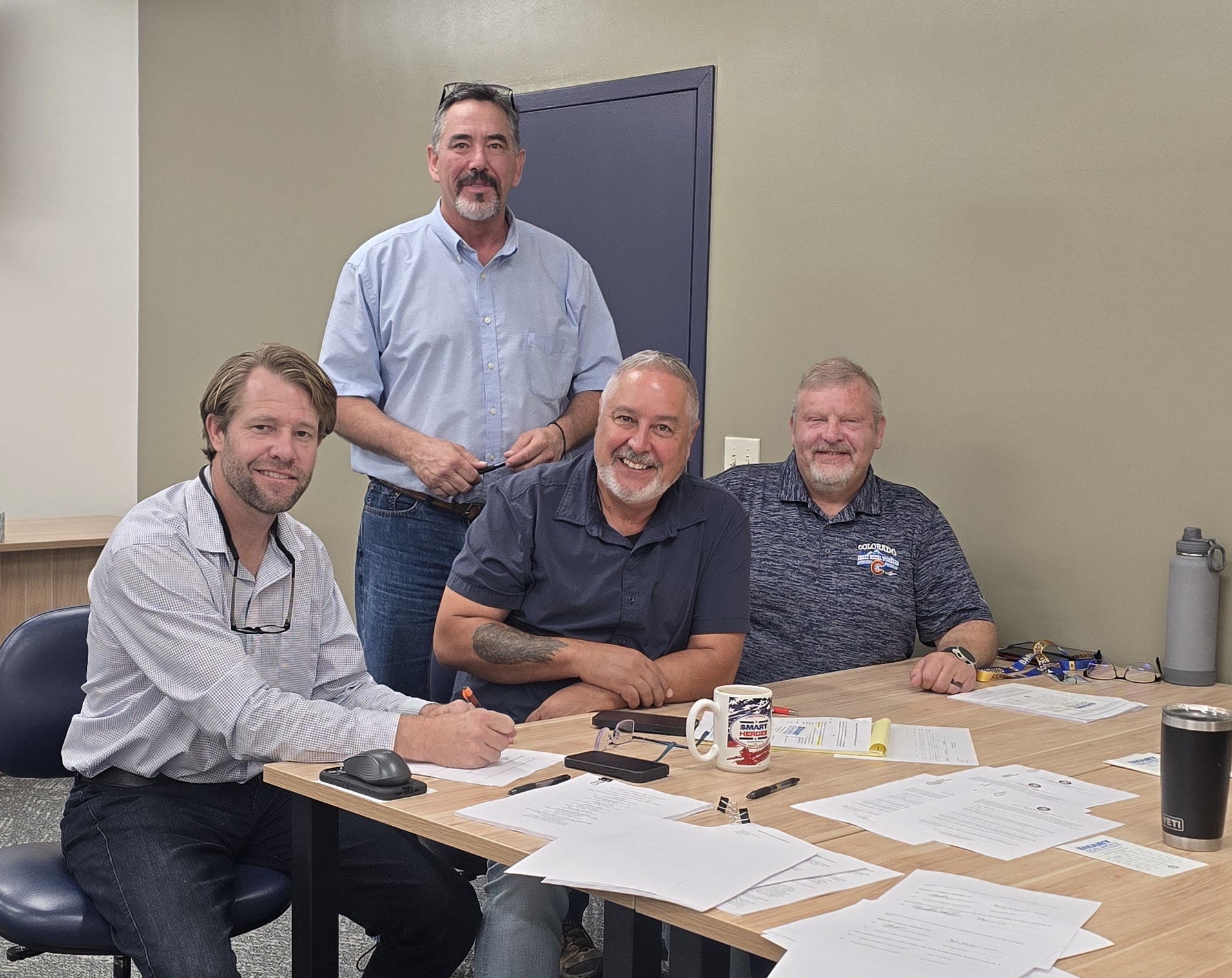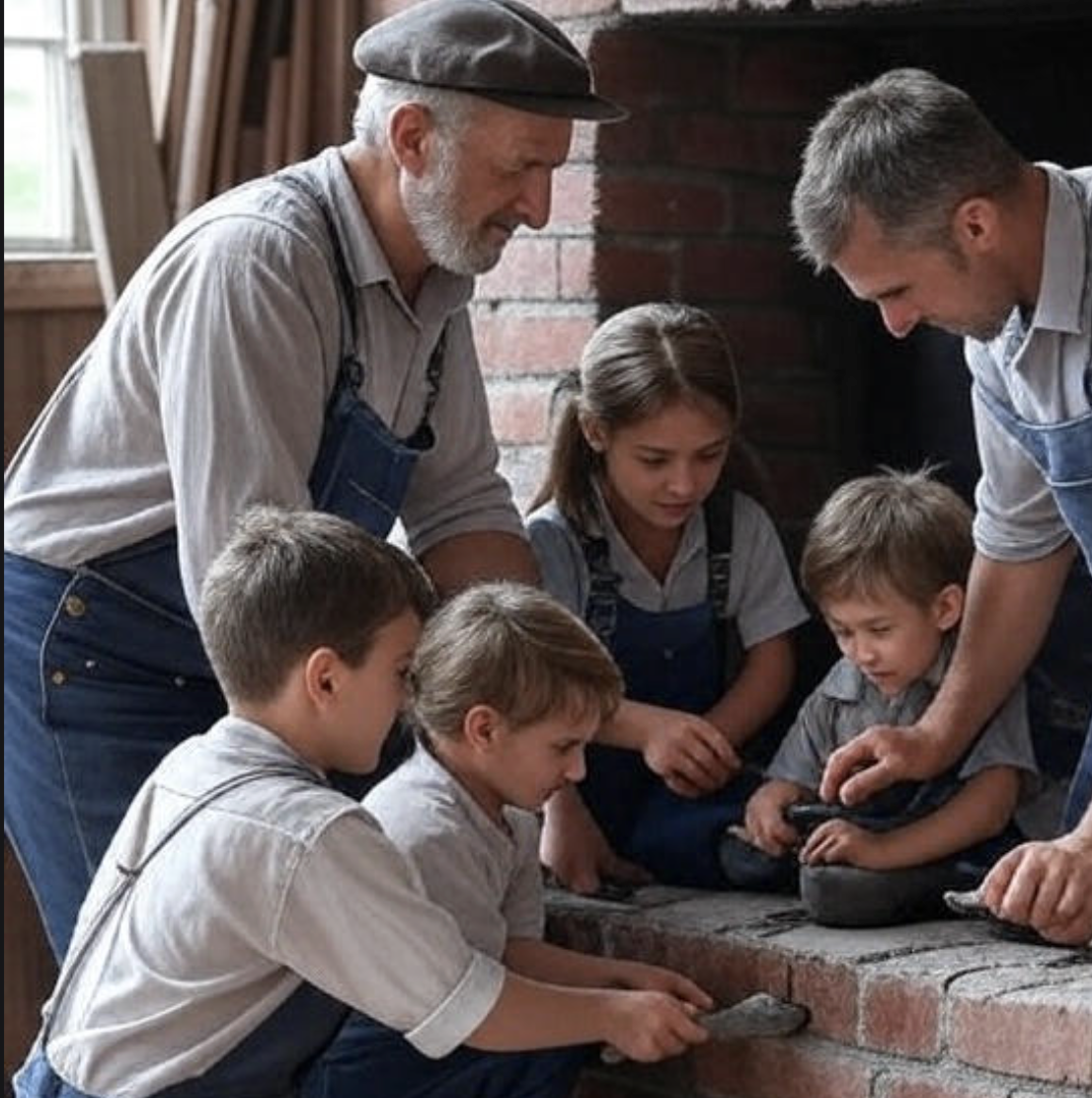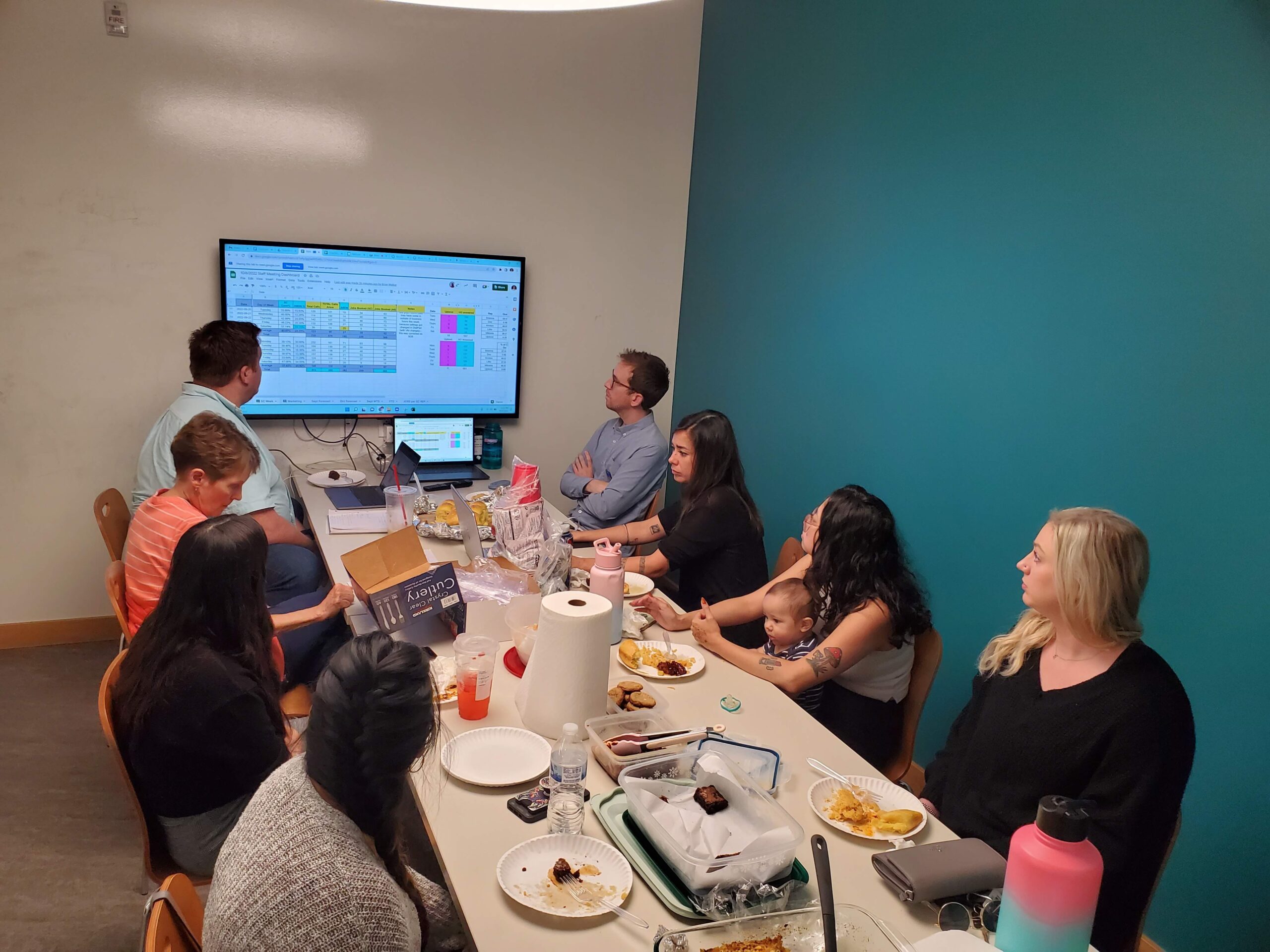How Did Byron Integrate Family Into His Business Story? Was It Worth It?
Short version: we took our boys to work, went to meetings, conferences, and introduced them to our network. It didn’t start with the European adventure. Below is a photo of my 11 year old son meeting world-renowned speaker and author Verne Harnish in Dallas Texas in 2022. My son is now meeting my network, and is better for it, and enjoying better prospects for his future because of it.
Below is a photo of both my sons with German company Wohler’s international salesperson at their corporate headquarters in Germany. My sons have had the introduction to leaders in certain fields and now have a platform to begin their journey. Why not? So we take them with us on this journey called life, and into this world called business, and this becomes an easier task for them than it was for me. They can stand on my shoulders, just as I stood on my father’s shoulders, and he upon his fathers’.
While in Switzerland my sons met the third generation owner of a steel foundry where castings are made from scrap metal. This fascinating tour was led by the business leader himself, who was happy to show us how his business works.
What Does Generational Family Business Integration Look Like?
My grandfather gave farming tasks to his 5 sons and daughter after school every day. From milking cows to plowing a field, my dad did family business tasks. And they sat around a common table and ate dinner. My father went to college, but had the added benefit of a trade.
Then in the following generation my father brought me to work, and gave me a trade and college degree. I was able to learn from him, and from my grandfather about the integration of work and life and business and how it integrated. And we had dinner around the family table in the evenings. Now it is my turn, and I have begun passing this same history down to my sons, now in their teens. They have come to work with me and learned the trade, even as they pursue their further education. They know we discuss business around the dinner table, and they have grown up hearing how the business works, and this is life. It is an integration of the stuff called life and the stuff one might call work. There are no hard lines, no boundaries. There is not 5pm shut off, no 6 am turn on. Our generational family business is a mild but determined blend of pursuing the future and present with our business history to prop us up.
My family is 100 years in on the generational business and family integration model. We take our kids with us and teach them life. We permit others to do the same. We slow down and teach other people’s kids as well.
It is time to embrace generational family business integration. How else will the story pass down through time? Shall we hire professional dis-interested tutors or bring our sons to work with us?
How can more business owners and individuals integrate their family into their current story?
By simply extending the invitation. In this heartwarming image below of my great-grandfather kneeling next to my mom we see the essence of working together. Work is good, and so is family, and when a family works together, it naturally passes skills, information, and values from one generation to another. In an age where parents wonder why their child has chosen a totally different value system, or why their child doesn’t want anything to do with the family business, could the answer be right in front of us? “Come along with me to work” could be the simplest sentence to utter and yet have the greatest impact.
Things in a family tend to follow a line. And now my son, some 13 years ago in this image, was captured on film enjoying a short climb up a chimney sweep’s ladder.
The Positive Impact Of Educating Children With Our Customers Knowledge.
People really do like to help other people. When they see a young person, and the setting permits conversation, it is common for older folks to impart wisdom to the younger. And this is just what we took advantage of. I took my sons to work with me when they were out of school- I did not permit them on the roof for safety reasons, but they would carry tools in and out of client’s home, pet the dog, talk to the client. They began to see the world wider and deeper. They learned to evaluate people’s life choices by the outcomes they physically saw by going in and out of dozens of homes and chatting with the clients. You know the drill, old engineer client meets my 11 year old boy and divulges free life-advice for 5-10 minutes. Or a retired school teacher meets my 15 year old son and leads him out to the back porch for a 20 minute lesson on the mammals of Colorado, and the local habitat of the stream behind the house and the name of the distant mountain and its local history. You can’t buy that kind of education in a classroom. And my boys simply grew up talking to adults and engaging in lively conversation. And they have a rounded view of the world provided to them by everyone from a retired engineer to a school teacher. So a big thank you to all those client’s who selflessly poured into my boys. When reflecting on work-life-balance I wonder if the thought ever crossed my mind. No. It didn’t. Work is part of life, and if you are really alive, you are working on something. So it’s bring your work to life and that is the balance.
Insights from Harvard Business Review’s Family Business Handbook
According to Harvard Business Review’s Family Business Handbook, multigenerational businesses that successfully integrate family members into operations tend to outperform their counterparts in resilience and adaptability. Family businesses account for over 80% of global enterprises and contribute significantly to economic stability, but the real power of these organizations lies in their ability to pass down both tangible and intangible assets, such as trust, relationships, and deep industry knowledge.
Key Benefits of Family Business Integration:
- Long-Term Vision: Unlike publicly traded companies, family businesses often focus on sustainability rather than short-term profits. By involving the next generation early, these businesses ensure continuity and reinforce their legacy.
- Deep Customer Relationships: Family-run businesses often prioritize relationship-building over aggressive expansion. Their long-term commitment to clients builds trust and brand loyalty over decades.
- Operational Flexibility: Family businesses tend to be more agile in decision-making, allowing them to pivot and adapt quickly to market changes.
- Cultural and Ethical Consistency: Families that integrate their values into their businesses maintain a strong cultural identity, which translates to better employee retention and customer satisfaction.
- Knowledge Transfer: Younger generations benefit from direct mentorship, learning both technical skills and soft skills like negotiation, leadership, and business ethics.
Strategies for Strengthening Family Business Integration:
- Encourage Early Exposure: Bring younger family members into the business through internships or mentorship programs.
- Develop a Governance Structure: Implement clear roles and responsibilities for family members to avoid conflicts and ensure smooth decision-making.
- Balance Tradition with Innovation: While honoring legacy practices, family businesses should also embrace modern strategies like digital transformation and sustainable business models.
- Prepare for Succession: Transitioning leadership to the next generation should be planned early to maintain business stability and growth.
Final Thoughts
Harvard Business Review emphasizes that family business integration, when done intentionally, not only strengthens the enterprise but also enriches family relationships. The ability to blend tradition with modern business acumen ensures long-term success and resilience in an ever-changing market. For families like mine, embracing this model is not just about passing down a business—it’s about building a legacy that future generations can continue to refine and expand.
My dad used to say, “How did you learn to do that skill? Who taught you that skill?” And we would reply, “We just watched you.”
Could passing on the generational integrated family business model be this easy?
